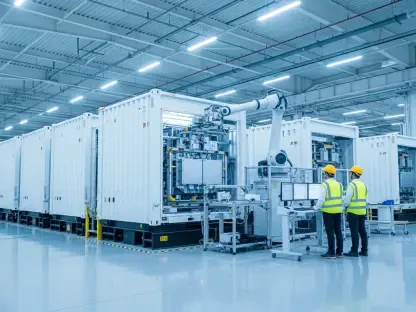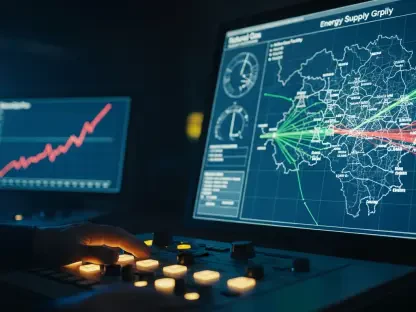The solar energy industry has emerged as a key player in meeting the world’s demand for renewable energy, positioning itself at the forefront of global efforts to achieve sustainable development goals. Solar power represents not only a technologically viable energy alternative but also an imperative solution as nations endeavor to mitigate the environmental impacts of fossil fuels. However, the importance of solar energy is significantly challenged by import tariffs, influencing both economic outcomes and environmental strategies. Rising costs, access barriers, and procurement delays caused by tariff policies have substantial implications for growth and innovation in the solar sector. This article delves into the current landscape of import tariffs in solar energy, exploring historical trends, real-world impacts, expert insights, and future prospects.
Current Landscape of Import Tariffs in Solar Energy
Evolution and Impact of Import Tariffs
Import tariffs on solar energy components have undergone considerable transformations over the years. Historically, these tariffs were initially introduced to support domestic industries by discouraging reliance on foreign products. Data from industry experts, including Wood Mackenzie and Anza Renewables, highlights significant trends indicating substantial cost increases in utility-scale storage and solar projects. Reports detail how tariffs contributed to elevated battery costs, with some predictions suggesting a rise of over 50%. Such increased prices have resulted in the U.S. emerging as the most expensive solar market globally, underscoring the profound influence of tariff policies on cost structures within the solar sector.
The impact of tariffs can be traced to policy decisions from past administrations, including the universal 10% tariff on batteries and an additional 145% on Chinese components, implemented during the Trump administration. Current administrative adjustments under the Biden administration continue to shape the solar market landscape. Various scenarios have been projected, ranging from a stable “trade tensions” environment leading to a 12% cost increase to a “trade war” scenario with over 50% escalation. These evolving tariffs have made solar construction in the U.S. considerably more expensive compared to European and Chinese markets.
Case Studies: Real-World Impact of Tariffs
Real-world examples of solar energy projects offer tangible insights into the implications of import tariffs. Projects across the U.S. have experienced fluctuating costs and construction delays, highlighting the practical challenges posed by tariffs. For instance, battery manufacturers facing unpredictable tariffs now offer price quotations with shorter validity windows, reflecting market volatility. Specific case studies of companies navigating this tariff landscape reveal strategic adaptations or setbacks. Energy storage developers who rely heavily on imports face continued uncertainty, as current domestic manufacturing meets only 6% of demand. Expected growth toward 40% domestic supply capacity by the end of the decade presents both opportunities and challenges.
Anza’s data illustrates considerable price swings for four-hour, 40-MW battery energy storage systems, with smaller distribution-connected systems facing even greater sensitivity to tariffs. These cases emphasize the complexity faced by developers in balancing cost forecasts for long-term utility-scale projects. Amidst unpredictable trade policies, these projects must address both immediate financial repercussions and overarching strategic goals within the renewable energy framework.
Expert Insights and Consequences
Expert opinions provide further depth to the ongoing conversation surrounding import tariffs and their consequences for the solar energy sector. Industry specialists, including economists, energy analysts, and policy advisors, offer a spectrum of perspectives on challenges and potential strategies for mitigation. The broader implications of tariffs extend beyond immediate financial obstacles, impacting market dynamics and sustainability objectives. Experts analyze how these tariffs could reshape the competitive landscape, contribute to technological innovation, and shape policy efforts toward a more stable tariff regime.
These insights underscore potential strategies aimed at alleviating tariff impacts. Emphasis on strengthening domestic manufacturing capabilities, fostering international trade partnerships, and advocating for policy reform can address the current tariff-induced challenges. Enhancing domestic capabilities to meet demand not only mitigates reliance on imports but also aligns with broader economic resilience goals. Policy advisors suggest engaging stakeholders in informed decision-making and collaboration to advance these objectives.
Future Outlook: Navigating the Solar Tariff Landscape
Exploration of future scenarios reveals a variety of potential developments for import tariffs and their influence on the solar industry. Analysts project diverse outcomes, balancing optimistic and pessimistic possibilities, with varied impacts on global markets, sustainability goals, and technological innovation. An optimistic scenario envisages stabilized tariffs, promoting international collaboration and investment in clean energy technologies. Conversely, the continuation of tariff uncertainties could hinder growth, perpetuating high costs and impeding technological progress.
Potential benefits include fostering resilience, diversifying supply chains, and promoting technological advancements. Challenges, however, remain in addressing transmission inefficiencies and interconnection barriers that compound tariff-induced costs. For the solar industry, navigating this tariff landscape necessitates a comprehensive understanding of both opportunities and risks. Prioritizing robust policy frameworks, innovative solutions, and strategic investment holds promise for advancing sustainability and technological innovation.
Conclusion and Call to Action
Reflecting on the complexities revealed by import tariffs, it is evident that these policies have shaped the solar energy sector’s trajectory in significant ways. The price volatility and project delays caused by tariffs underscore the urgent need for informed policy-making and systematic approaches to secure the future of solar energy. As stakeholders engage with these challenges, lessons learned from past experiences and shared insights can drive solutions that leverage solar energy’s full potential. Encouraging international collaboration, committing to sustainable practices, and advocating for balanced tariff policies are essential steps toward securing a greener future. Solutions emerging from both community and government actions can facilitate impactful progress across the solar energy landscape.









